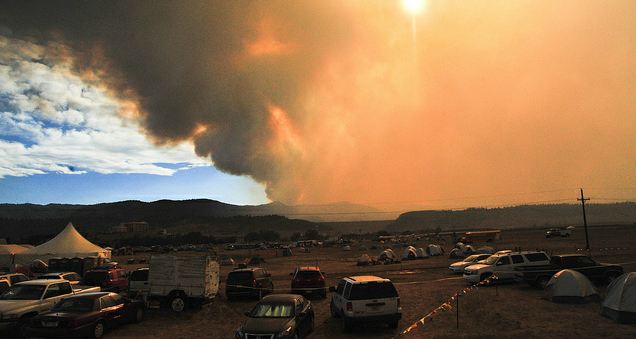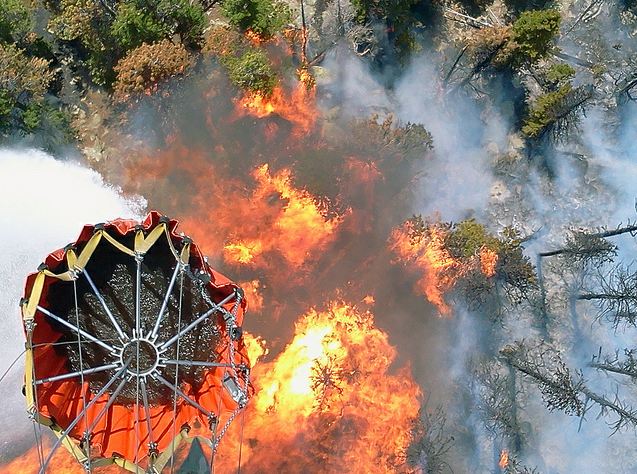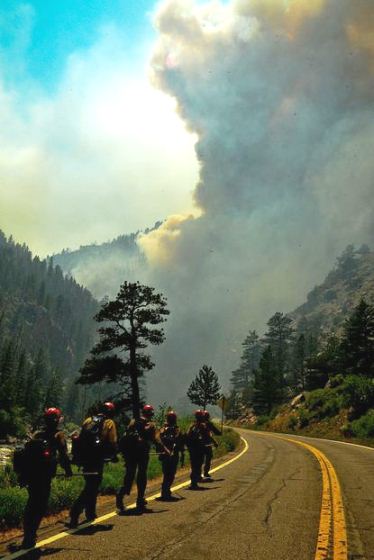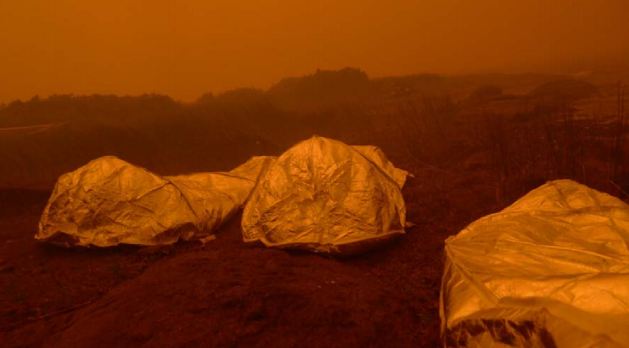Meteor grounds air tankers
 Sightings of a meteor grounded the air tankers working on the Springer fire west of Colorado Springs on Wednesday. There were numerous reports of the meteor from New Mexico, Colorado, and Kansas including the pilot of an air tanker making a drop on the fire. The Associated Press quoted Steve Segin, a spokesperson for the Springer fire, as saying the air tanker “landed as they normally do to reload, and for safety reasons they grounded themselves until they could figure out what it was they saw”.
Sightings of a meteor grounded the air tankers working on the Springer fire west of Colorado Springs on Wednesday. There were numerous reports of the meteor from New Mexico, Colorado, and Kansas including the pilot of an air tanker making a drop on the fire. The Associated Press quoted Steve Segin, a spokesperson for the Springer fire, as saying the air tanker “landed as they normally do to reload, and for safety reasons they grounded themselves until they could figure out what it was they saw”.
A TV station in Denver, 7News, reported:
The Rocky Mountain Area Coordination Center said planes were grounded after the reports started coming in just after 2:30 p.m.
It was determined that the object was a meteor that broke up in the air over Kansas on a trajectory that would carry it to Florida.
None of the debris hit the ground in Colorado.
Aircraft were released to resume flying at 4 p.m., the Fire Coordination Center said.
This may be the first time that firefighting aircraft were grounded because of a meteor.
It is difficult to tell, when observing a meteor that is falling thousands of miles an hour, how far away it is. There were several reports from people in Colorado who thought it was nearby, but it was actually hundreds of miles away and there were no indications that any portions of it hit the earth. After grounding the air tankers for 90 minutes, let’s not even call this a near miss.
Wildland firefighter dies in Greece
The Associated Press is reporting that a firefighter working on a wildfire in Greece died Wednesday. A fire department spokesperson said the 28-year old felt unwell and was taken to a hospital where he was pronounced dead. The firefighter was battling a fire that was burning inside an air force base west of Athens primarily used by firefighting and transport planes.
Our sincere condolences go out to the firefighter’s family and coworkers.
Escaped prescribed fire in North Carolina burns 21,000 acres
A prescribed fire on the Croatan National Forest that escaped on Father’s Day, named the “Dad Fire”, has now burned over 21,000 acres ten miles south of New Bern, North Carolina. The fire is 60 percent contained and has run up costs of $400,000. Smoke from the fire is causing problems for some residents and air quality alerts have been issued for 12 counties.
Congressman Walter B. Jones, R-N.C., called for an investigation Tuesday.
“Our No. 1 priority is to get the fire contained,” said Jones, in a news release. “However, I share the concerns of many Eastern North Carolinians as to how this poorly planned ‘prescribed burn’ is negatively affecting tourism, public health and taxpayers who are being asked to pick up the tab to fight a fire that could have been avoided.”
District Ranger Pancho Smith says even though some prescribed fires do turn into wildfires like this one, he does not regret conducting them.
“One of the big advantages in this country of controlled burns, and on national forest systems across the country, is the reduction of fuel on the forest floor. If we leave it out, when we do get a fire start, a wildfire, there’s nothing we can do about it,” said Smith.
The fire is being managed by Cherry’s Type 3 Incident Management Team.
Texas Forest Service receives Pulaski Award
Congratulations to the Texas Forest Service. Following is the text from a news release:
==============================================================
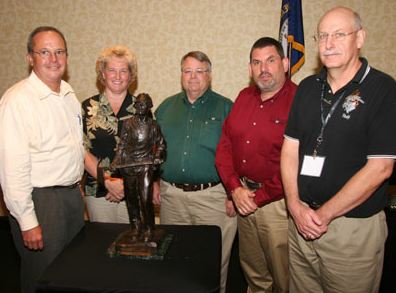 June 21, 2012 – COLLEGE STATION, Texas – Texas Forest Service was presented last week with the Pulaski Award, a national honor for outstanding service in wildland firefighting.
June 21, 2012 – COLLEGE STATION, Texas – Texas Forest Service was presented last week with the Pulaski Award, a national honor for outstanding service in wildland firefighting.
The award, commending the agency for its response during the 2011 wildfire season, is presented annually by the National Interagency Fire Center. It was announced at the Southern Group of State Foresters annual conference in Louisville, Ky.
The coveted 30-inch bronze statue is named after U.S. Forest Service Ranger Ed Pulaski, who led a crew to safety during the Great Fire of 1910. First presented in 1998, this is the first time the Pulaski Award has come to Texas. It will stay with Texas Forest Service for one year then will be shipped to the next recipient.
Texas Forest Service Associate Director Mark Stanford said the recognition is an honor for the emergency responders who bravely served Texas during last year’s unprecedented wildfire season. More than 30,000 wildfires burned almost 4 million acres, destroying 2,946 homes across the state.
The wildfires were suppressed with assistance from more than 16,000 emergency responders from all 50 states, along with 239 dozers, 954 engines and 246 aircraft.
“We accept this award on behalf of all the local, state and interagency firefighters who participated in the 2011 wildfire season,” Stanford said. “They’re the ones who really earned this award.”
Gary Bowers, chairman of the National Interagency Fire Center Governing Board, wrote in a letter to Texas Forest Service that the agency demonstrated “exceptional work in interagency cooperation and coordination, safety of their firefighters and the public, the development of partnerships and group performance in fire management and suppression.”
“It is our hope that collaboration efforts such as this will increasingly inspire and inform new cooperative efforts across the country,” Bowers wrote. “Congratulations on this award and the excellent work that it recognizes.”


